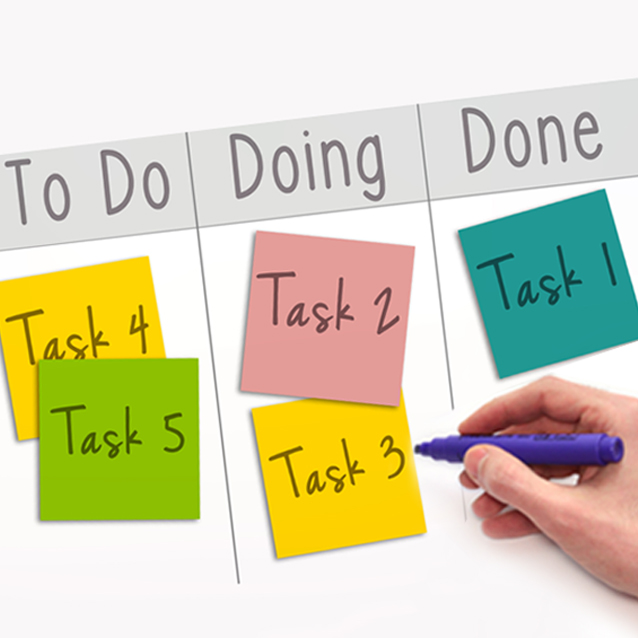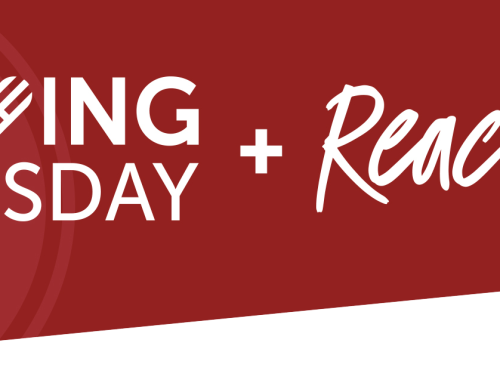This should go without saying, but clutter will kill your motivation. Make sure your desk is clear, or mostly clear accept for the most important items you use on a regular basis such as your computer, pens/pencils, etc. Everything else should be stowed in drawers or on shelves using drawer organizers or labels for easy finding. If your like me, you always have paperwork on your desk. Having a paper organizer with multiple trays will clean up that paper clutter while keeping important documents within close reach.
2. Small Desk? No ProblemPut your computer monitor on a shelf to free up space. This extra space allows you to push your keyboard and mouse underneath when not in use to give you desk space. Or, store notebooks and to do lists under the shelf to keep them close without taking up useful desk space. Keep pens, pencils, stickies and other desk needs neatly stored in jars or decorative containers to reduce the clutter and give your desk a stylish makeover. Our Creative Director Amy prefers old wooden boxes and tin buckets to give a rustic flare to her workspace.
3. Eliminate Cord ClutterIf you use a power strip to juggle multiple electronics that need plugs, use a command strip to attach the power strip underneath your desk or to the leg if it’s wide enough. Use these self adhesive cable tie mounts to run the cords along the underside of your desk so they are not just hanging free: see here on Amazon. Corn wraps are also a nice addition to make the cord bundles a little more attractive.
4. Create a File (paper or electronic) SystemEvery office needs to have a simplified file naming system. Whether your career requires you use client names, dates or something different, make sure you have a system in place so your files are all consistent, thus making them easy to interpret and find. Also create an organized system on storing these files. Whether that means each client or project has a master folder with folders inside including monthly/weekly projects, make sure all files are stored away so they can be easily found and do not clutter your desktop. We use Drop Box for Business to keep all our client files nice and organized. What’s best, if the client calls and needs a logo from 2015 we can easily find it and send a shared link.
5. Use a Color Coded CalendarWhether you prefer paper or electronic, color coded calendars can be time savers. There are a few ways to use/take advantage of this: – If you only work with a select few clients, each client gets assigned a color – Color code by priority – If you work with multiple people on your team for a project, each co-worker is assigned a color
6. To-Do ListsThis organization tip may be old-fashioned, but to do lists can keep you on track and help you prioritize on even the craziest days. With technology you are able to create to do lists that sync between cell phones, desktops, laptops and tablets assuring that your list is always with you. Most of these apps also allow you to physically check off items and you complete them. We use a project management software called Active Collab for business and Cozi for personal checklists like groceries and home chores. If you’re not one to rely on software to manage your lists, keep a small notebook with you for when you need to jot something down. Its a good idea to have one even if you use a digital list, just be sure and add it to your master list at another time that’s more convenient.
7. Consider a Kanban Board.We’ll go into more detail about this next week, but this is one of our favorite organization tips. In short, it’s a board, digital or manual, with columns for To Do, Doing, and Done. By visually categorizing your tasks and moving them from column to column as you work you reduce the desire to jump form project to project which makes you 70% more productive!
8. Keep email clutter to a minimum by using Slack.We love Slack because not only does it allow us to neatly organize our conversations all in one place, but we can tag and search by keyword. It makes referencing that discussion on Pantone colors 6 months ago an easy task. I know it would take me an hour to find an email, if it hadn’t already been deleted.
9. Start and End Your Day With 15 MinutesGet your head in the game by starting every day, or work session, by checking emails, looking over your calendar and to do lists. By doing this, you are giving your brain time to focus and prepare for what needs to get done that day without feeling lost throughout your day. Same goes for the end of the day, take 15 minutes to clear your head, write down any additional thoughts/to-do’s and answer any emails that you didn’t get to during the work day. This aids in not taking any stress home with you, allowing you to check out for the evening and return the next day with a clear, organized head.
Do you have some great organization tips you would like to share? We would love to hear about them in the comments!




